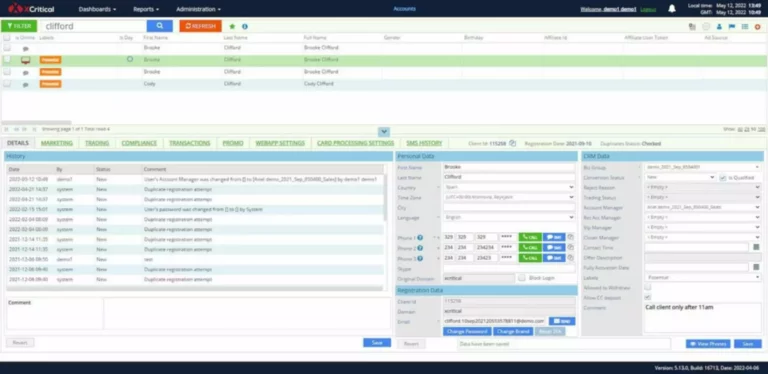The objective with a layer 2 answer is to increase transaction pace and cut back costs by “rolling up” work before recording it on the first blockchain. Examples of layer 2 initiatives embrace Bitcoin’s “Lightning Network” and Polygon (MATIC -2.61%) and Uniswap (UNI -6.54%) on Ethereum. It’s only a price of decentralized peer-to-peer switch; the precise mechanism that also permits you true ownership over your property. With self-custody, only you have agency over your property, simply paying a miner to course of a transaction you’ve already agreed to. Your community fee or gasoline charge is the way you give back to the events working nodes effectively. In some cases, similar to with the Klaytn network, a portion of gasoline fees are collected in a treasury to help the founders create a better community.

Safety

For transactions to be preferentially executed ahead of other transactions in the identical block, a higher tip could be added to attempt to outbid competing transactions. The base fee is about by the protocol – you must pay no less than this amount in your transaction to be thought-about legitimate. The priority payment is a tip that you just add to the base payment to make your transaction engaging to validators in order that they choose it for inclusion within the next block. The gasoline charge is the amount of fuel used to do some operation, multiplied by the fee Non-fungible token per unit gas. The payment is paid regardless of whether or not a transaction succeeds or fails.
In blockchain contexts, “gasoline” refers again to the unit that measures the amount of computational work required to execute operations on the community. Just as cars want fuel to run, blockchain transactions need “gas” to be processed. Each operation that happens on the community requires a sure amount of fuel, which is paid in the community’s native cryptocurrency. Blockchain transaction fees are costs users pay to have their transactions processed and confirmed by the network.
Fuel And The Ethereum Virtual Machine (evm)
This estimation helps users plan transactions with precision and avoid sudden costs. Many decentralized purposes, cryptocurrencies, and tokens have been created using the EVM. Because the Ethereum blockchain is a part of the EVM, the cryptocurrencies built on that blockchain require fuel fees. Because it uses the Ethereum blockchain, users need to pay fuel fees in gwei to conduct transactions on the chain. Originally, gas fees had been a product of a gas restrict and the gas value per unit. In August 2021, Ethereum changed its calculations for gas fees to make use of a base payment (a set payment for the transaction set by the network), items of fuel required, and a precedence fee.
Crypto gas fees are important, and if you want to explore crypto, you’re going to want to pay up. The main value-add of sharding might be a dramatic discount within the gasoline fees required to transact on Ethereum. This gas payment reduction will dramatically enhance the network’s ability to scale. Visit Gemini today to learn more about ETH fuel fees and discover assets on the Ethereum community. This calculation highlights how gas charges guarantee transaction prioritization while compensating validators and deterring spam.
- All transactions carry a variable fuel fee that’s primarily based on the dimensions and complexity of the operation.
- Crypto gasoline fees are important, and if you need to explore crypto, you’re going to need to pay up.
- This amount a participant is prepared to pay to have their transaction validated is called the ‘gas limit’.
- Gas fee are a key part of cryptocurrency transactions, guaranteeing the computational sources are falsely compensated on the Ethereum blockchain.
- While easy transactions—like sending ETH—cost less, advanced operations (e.g., interacting with sensible contracts) devour more gas, resulting in larger prices.
However, The Merge was not designed to handle the problem of excessive charges. It was considered one of many updates that, when mixed, are believed to finally decrease fuel fees. Cryptocurrencies and blockchain technology goal to shake up the standing quo of cash, the finance industry, and the very basis of how business is conducted. With a decentralized construction and lower charges, crypto might assist make the world a more efficient place. He holds certifications from Duke University in decentralized finance (DeFi) and blockchain know-how. Layer 2 solution https://www.xcritical.com/, like Polygon and Arbitrum offer reduced gas fees by way of sharding.

Gas fees on cryptocurrencies usually are not too different from those drivers pay at the pump. The term fuel is used as a outcome of these expenses serve to “fuel” the work that is required to make the Ethereum blockchain continue what are crypto gas fees functioning. Unfortunately, there isn’t a method for you to directly reduce the influence of the gasoline unit, however there are methods that you can scale back your whole charge by decreasing the base fee and tip.
Now that you simply understand how fuel charges work on Ethereum, you may really feel snug enough to experiment with the cryptocurrency yourself. Most Ethereum wallets like MetaMask will let you preview the estimated gasoline price and transaction prices that you are going to pay. You can usually alter these numbers in the superior gas settings throughout the pockets. Since the London upgrade, nevertheless (as we noticed within the Gas Price Calculation section), the blind auction analogy is no longer legitimate. Now, the community defines a fixed base payment for every new block relying on the demand for transactions within the previous block. To finest perceive how gas charges are calculated, we’ll first want to clearly define a couple of phrases.
In order to get an understanding of why gasoline charges cost so much and how one can save on them, it’s important to know how they’re calculated. While it might seem a steep instance, that may typically be the case so as to ship a transaction or perform a operate on Ethereum’s network. And not like the case with ATM fees, there’s no method the Ethereum network will refund you on your gas charges on the finish of the month. The priority payment (tip) incentivizes validators to include a transaction in the block. Without tips, validators would discover it economically viable to mine empty blocks, as they’d receive the identical block reward. Small tips give validators a minimal incentive to include a transaction.
To reduce the value of your whole gas fee through a lower base payment, you can make your transaction on the network at a time when fewer persons are utilizing the blockchain. This is as a result of, in a means, base fees are a representation of demand for using Ethereum. Gas fees are larger when extra work is required to work together with the Ethereum community.
Gas charges are a particular type of transaction charge utilized in varied blockchain networks to measure the computational effort required to execute operations. These operations embody primary transactions, deploying smart contracts, and interacting with decentralized applications (dApps). Understanding gas fees is necessary for anybody using blockchain networks, particularly Ethereum, where the concept of gas is most prominently applied. Gas charge are a key component of cryptocurrency transactions, ensuring the computational sources are falsely compensated on the Ethereum blockchain. For instance, fuel is required to ship ETH, to mint and buy non-fungible tokens (NFT), and to make the most of Ethereum-based sensible contracts and decentralized functions (dApps).
Ethereum, as a platform and system, is designed for use by others to create extra use cases for blockchain and cryptocurrency. For this purpose, it is commonly called the Ethereum Virtual Machine, because purposes could be created that run on it. The EVM is basically a large virtual computer, like an software in the cloud, that runs other blockchain-based purposes within it.
답글 남기기